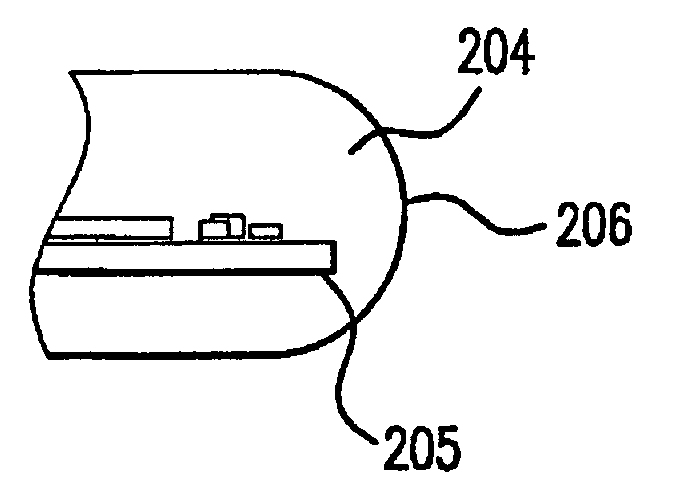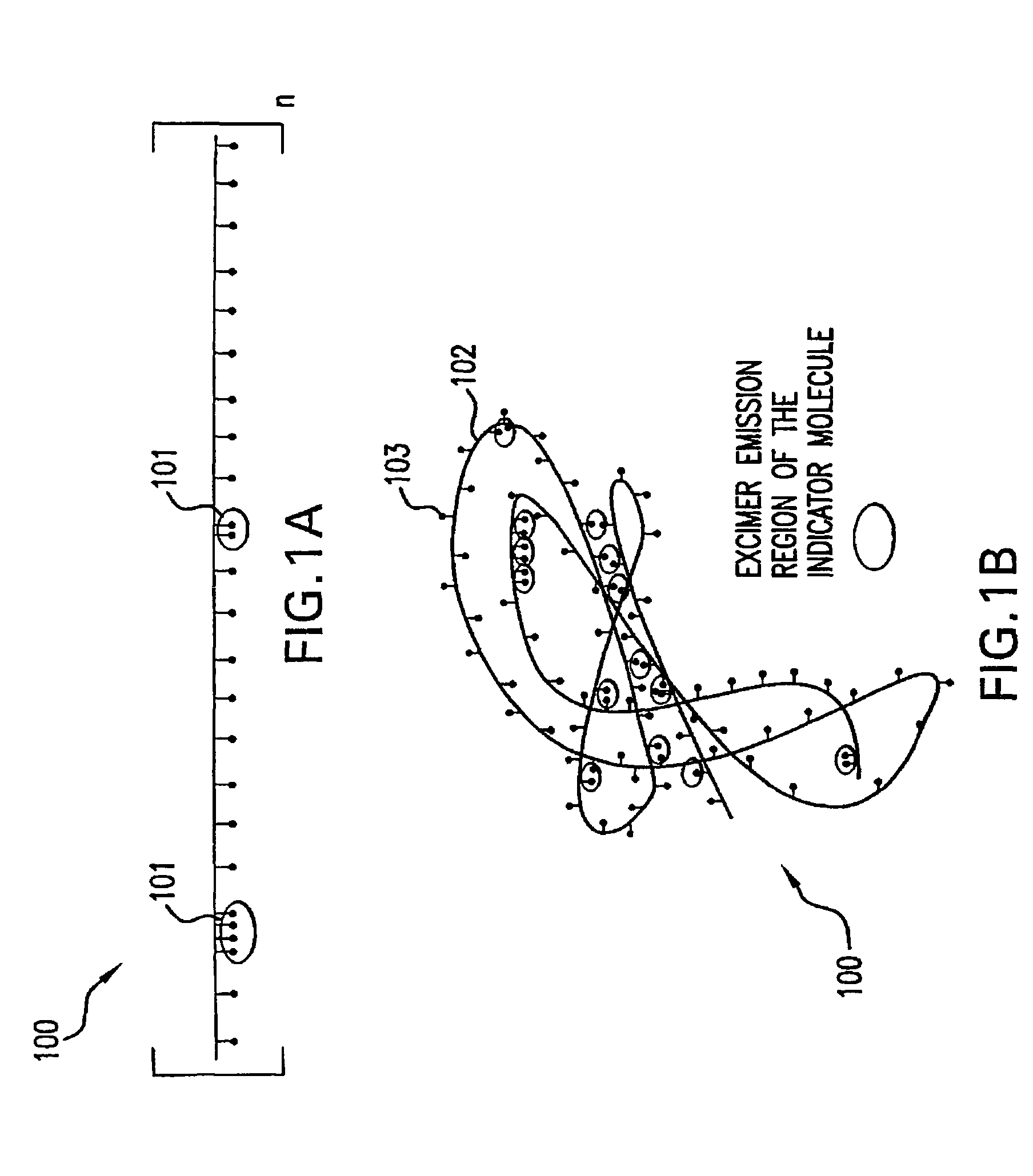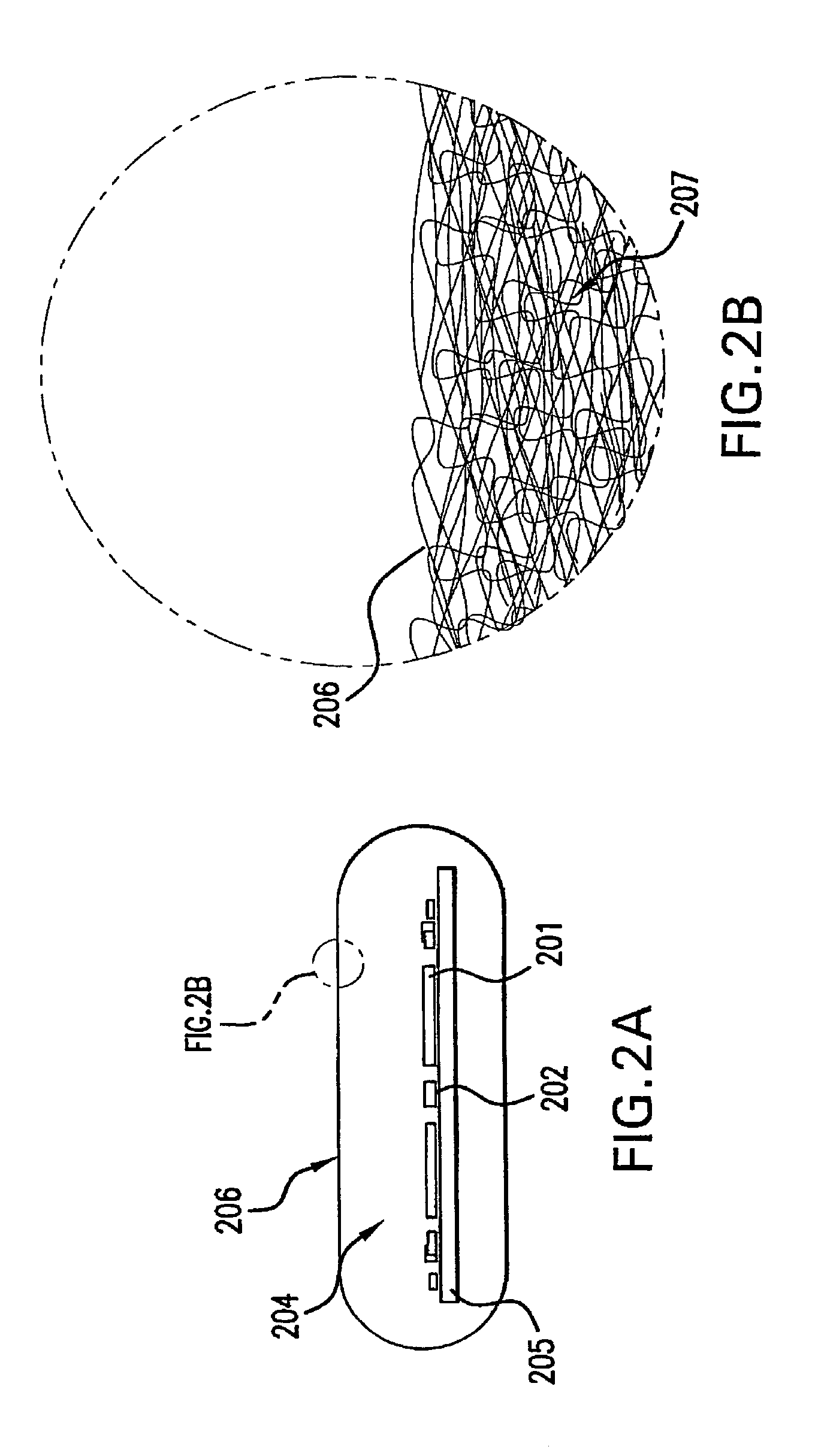Non-covalent immobilization of indicator molecules
a technology of indicator molecules and molecules, applied in the field of immobilization methods, can solve the problems of affecting the optical path of a sensor, interfering with the function of optical waveguides, and adversely affecting the properties of materials
- Summary
- Abstract
- Description
- Claims
- Application Information
AI Technical Summary
Problems solved by technology
Method used
Image
Examples
example i
[0065]An example of a protocol for producing the graft in accordance with one embodiment of the present invention is described below:
[0066]Solution A comprising HEMA (95.8%), EGDMA (ethylene glycol dimethacrylate) (0.2%) as a crosslinker and acrylic acid (4%) was provided. A fluorescent monomeric indicator molecule, e.g., bis-carboxylate bis-boronate-anthracene, was added to Solution A at 14 mg / ml (up to about 28 mg / ml) to create “Solution 1.” 300 μl of Solution 1 was then added to 700 μl of distilled, deionized water to yield “Solution 2” (white gel). 33.6 μl of a 10% solution (100 mg / ml) of VA-044 (Wako Chemical Co., Japan) (free radical, water soluble initiator molecule) was added to “Solution 2” to create “Solution 3.”
[0067]In the meanwhile, the immobilization substrate, in this instance a PMMA core, was exposed to ozone for overall 30 minutes in a UVOCS (Model # T0606 ozone chamber) to create hydroxyl groups on its surface to aid in wetting. A thin coating of stopcock grease wa...
example ii
[0068]An example of a protocol for producing the graft in accordance with another embodiment of the present invention is described below:
[0069]500 mg of a monomeric indicator molecule, such as bis-carboxylate bis-boronate-anthracene, was added to a 5 g solution comprising HEMA and acrylic acid (90:10; w / w) to create “Solution 1.” However, the relative molar ratios of the monomers may be varied to achieve different overall hydrophilicity and control the presence of excimer regions. The relative concentrations of the monomeric indicator molecule and hydrophilic monomer may range, for example, from 750 mg-250 mg indicator to 5 g of Solution A. AIBN (2,2′ azo-bis-isobutyronitrile, 98%), a free radical initiator that catalyzes the polymerization of the macromolecular indicator molecule, was added at 1 weight percent to “Solution 1” to create “Solution 2.”“Solution 2” was combined with a solution comprising ethanol and 2-methoxyethanol (70:30, w / w) at a weight ratio of 1:10 to create “Sol...
PUM
| Property | Measurement | Unit |
|---|---|---|
| charge | aaaaa | aaaaa |
| diffusion distances | aaaaa | aaaaa |
| diffusion distances | aaaaa | aaaaa |
Abstract
Description
Claims
Application Information
 Login to View More
Login to View More - R&D
- Intellectual Property
- Life Sciences
- Materials
- Tech Scout
- Unparalleled Data Quality
- Higher Quality Content
- 60% Fewer Hallucinations
Browse by: Latest US Patents, China's latest patents, Technical Efficacy Thesaurus, Application Domain, Technology Topic, Popular Technical Reports.
© 2025 PatSnap. All rights reserved.Legal|Privacy policy|Modern Slavery Act Transparency Statement|Sitemap|About US| Contact US: help@patsnap.com



